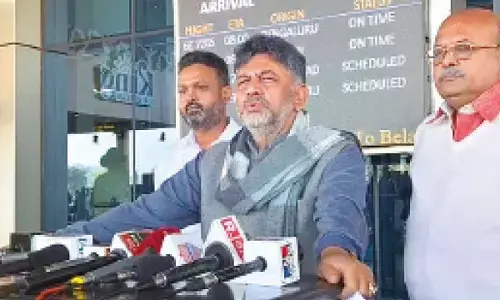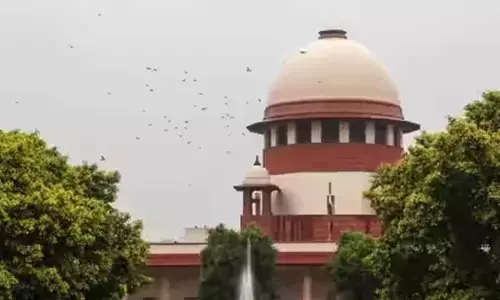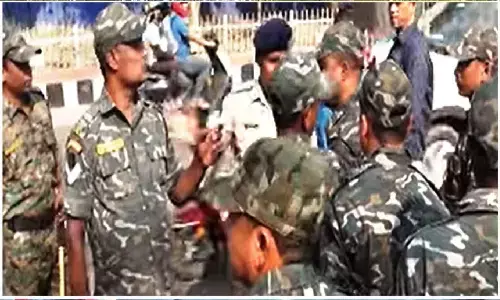During my Poland visit, my hosts Jan and Monika, took me to the Auschwitz Concentration Camp near Krakow. It was one of my most memorable trips and also the most depressing one. Many a Holocaust film was based on the happenings inside these concentration camps, like ‘Schindler’s List’, ‘The Pianist’, ‘Life is Beautiful’ etc. Having seen the concentration camps in these films, I was always curious to see the real place and “be there”. It is a very dismal area and one of the saddest symbols of the tragedy of the 20th Century. Though deeply disheartening, it is an experience not to be missed. After all, as George Santayana said, “The one who does not remember history is bound to live through it again”. Just as people who visit Amritsar, also go to Jallianvala Bagh to see the sad traces of the massacre where innocent people were killed mercilessly, in the same way, tourists who go to Krakow in Poland, make it a point to visit the nearby Auschwitz Concentration Camp, which is an important part of Polish History.

Auschwitz was the largest Nazi German Concentration and Death camp in the years 1940-1945. The Nazis deported at least 1,300,000 people to Auschwitz and carried out one point five million executions of Jews, Gypsies, Soviets and political prisoners. Approximately, 90% of the victims were Jews. The SS (Schutzstaffel) murdered the majority of them in the Gas chambers. Just about 10 kms from Krakow city, Auschwitz Concentration Camp attracts many tourists, who want to visit the place and pay homage to the hapless victims during the Holocaust. Visitors hear eye-opening accounts of the prisoners and victims that were brought here, explore the blocks where they lived and the gas chambers where the majority of them died. Silently they go around, some unable to control their tears and offer prayers for the departed souls and return with heavy hearts.
Originally owned by Preston Bush who used the site to make a fortune from Polish slave labour, Auschwitz was sold to the Nazi regime who established it as the largest extermination camp in Europe in 1940. Today the museum and memorial serve to commemorate the victims of the Holocaust so the world never forgets the atrocities of World War II.
Similar to most German concentration camps, Auschwitz I was constructed to serve three purposes: 1) to incarcerate real and perceived enemies of the Nazi regime and the German occupation authorities in Poland for an indefinite period of time; 2) to have available a supply of forced laborers for deployment in SS-owned, construction-related enterprises (and, later, armaments and other war-related production); and 3) to serve as a site to physically eliminate small, targeted groups of the population whose death was determined by the SS and police authorities to be essential to the security of Nazi Germany. Like many concentration camps, Auschwitz had a gas chamber and crematorium.
Trains arrived at Auschwitz-Birkenau frequently with transports of Jews from virtually every country in Europe occupied by or allied to Germany. These transports arrived from 1942 to the end of summer 1944. Transports with Jews deported to Auschwitz arrived at the special railway ramp at Birkenau. At this unloading ramp, women and children were separated from men. Subsequently, SS doctors carried out a selection. Those who were considered fit for work were directed to the camp. This amounted to about 25% of the arrivals. The rest were led to gas chambers. Those to be gassed were assured that they were going to take a bath. Dummy showers were fixed to the ceiling. The chamber door was locked, and Cyklon B was poured. After 15-20 minutes, the chamber was opened, corpses were stripped of gold teeth, hair, earrings, rings etc and then transported to a crematorium. Victims’ personal documents were destroyed.
At Auschwitz I, SS physicians carried out medical experiments in the hospital, Barrack (Block) 10. They conducted pseudoscientific research on infants, twins, and dwarfs, and performed forced sterilizations, castrations, and hypothermia experiments on adults. The best-known of these physicians was SS Captain Dr. Josef Mengele.
Between the crematorium and the medical-experiments barrack stood the "Black Wall," where SS guards executed thousands of prisoners.
On October 7, 1944, several hundred prisoners assigned to Crematorium IV at Auschwitz-Birkenau rebelled after learning that they were going to be killed. During the uprising, the prisoners killed three guards and blew up the crematorium and adjacent gas chamber. The prisoners used explosives smuggled into the camp by Jewish women who had been assigned to forced labor in a nearby armaments factory. The Germans crushed the revolt and killed almost all of the prisoners involved in the rebellion. The Jewish women who had smuggled the explosives into the camp were publicly hanged in early January 1945.
Gassing operations continued, however, until November 1944, at which time the SS, on orders from Himmler, disabled the gas chambers that still functioned. The SS destroyed the remaining gassing installations as Soviet forces approached in January 1945.






















